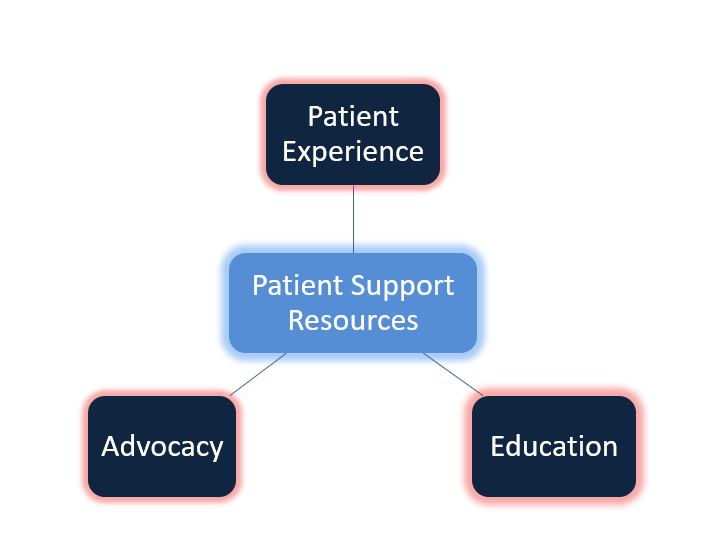Support Starts at Self
Last month I wrote about how trainees and early career professionals should approach the New Year with a focus on mentorship (from multiple sources when possible!) as a priority to advance their careers. The input we can accumulate from individuals that have the ability to “teach us the ropes”, and expose us to some new tool or perspective to enhance our professional growth and advancement, is essential. This input carries value that fuels the propagation and elevation of society upward and forward. Today I want to discuss what I envision to be the “other side of the coin” to mentorship, the way in which an individual can advance by an “output” effort, in complement to the “input” that mentors provide. Namely what I’m referring to is advocacy. Trainees and early career professionals tend to under-appreciate 2 main truths with regards to advocacy efforts:
1- We are prone, primed and sometimes advised to shy away from advocating for our own causes.
2- We underestimate our ability to advocate and support others within our professional communities.
I’ll start with the case for self-advocacy. It can be hard to dissociate the idea of being self-advocating from being self-absorbed, and that is the root cause for why most well-meaning, humble folks avoid the issue altogether. Seeming selfish or self-centered is of course a bad trait, a noxious attitude that most trainees and early career professionals want to avoid at all cost. Selfishness will lead to career derailment and loss of support from other members in the community. But self-advocacy on the other hand, stems from hard work, a desire for just outcomes, as well as confidence and pride in one’s workmanship and abilities. To advocate for yourself, you must first believe and prove that what you’re advocating for is a just and worthwhile cause.
When there is evidence to support the self-promotional effort, individuals can and should be empowered to advocate for themselves. A quick and easy framework to approach self-advocacy could flow like this:
The first step towards justified self-advocacy is identifying and analyzing the reasons why one should or should not pursue the cause. This can sometimes be difficult, we might not be the best judges of our own efforts, sometimes it helps to have “peer-reviewers” to help us assess the need for advocacy or not. Family, friends, partners, colleagues, and specialized professionals (referees, counselors, etc), are all individuals that could supply viewpoints that help us understand and decide on whether self-advocacy is warranted at present, or if there still is some distance to cross before we get to that point.
Once justified, championing your own causes has become in fact necessary in a world where competition is present, and alternatives are available, at every stage in a career, most evidently in the early career segment of professions. This necessity also brings nowadays a level of expectation from decisions makers, who may see and value self-advocacy efforts as positive traits in individuals seeking professional advancement. This is the clearest reason why one should acquire and optimize the skills needed to become a just self-champion. Of major importance in this discussion is to note that the way in which one is doing what’s needed to advance, is doing so in a manner leading to an overall benefit, and no harm to anyone else (being a champion for one self can also equal being a champion “for the greater good”).
The second point mentioned above, specifically referring to advocating and supporting others within the shared professional community, also warrants a closer look. A strong and advancing community can promote growth for everyone within it, creating momentum and a sense of altruistic advocacy that is much easier to root for and accept without any hesitation or fear of negative feedback. When professionals in a shared community see the advancement of peers as a strength and growth for the whole group, a collective effort to support and promote one another is created, and a positive feedback loop is fueled.
This is significantly more important when the community can have individuals that face some deliberate, or blind forces, that work against their growth and advancement (such as minorities, persons with disabilities, sex and gender systematic biases, and other forces that do exist in many ways). Whenever there exists a gatekeeper with unjust (knowing or blind) motivation that hinders the advancements within a professional community, it is strongly desirable (and necessary) for a whole group effort to champion and advocate for the fair advancement of the affected individuals within this community. Everyone would gain at the end. A strong community would be built and a momentum for “paying it forward” will start.
As mentioned initially in this post, early career professionals have the unique space to be very highly invested in optimizing the “input” provided to them (mentorship), and the “output” they require (advocacy, both self and community oriented). As we progress in our personal and professional journeys, we must aim to maximize the ways in which mentorship and advocacy can help us achieve the goals we aim to accomplish, both for our own benefits, and the benefits of the communities that we are a part of.
“The views, opinions and positions expressed within this blog are those of the author(s) alone and do not represent those of the American Heart Association. The accuracy, completeness and validity of any statements made within this article are not guaranteed. We accept no liability for any errors, omissions or representations. The copyright of this content belongs to the author and any liability with regards to infringement of intellectual property rights remains with them. The Early Career Voice blog is not intended to provide medical advice or treatment. Only your healthcare provider can provide that. The American Heart Association recommends that you consult your healthcare provider regarding your personal health matters. If you think you are having a heart attack, stroke or another emergency, please call 911 immediately.”


